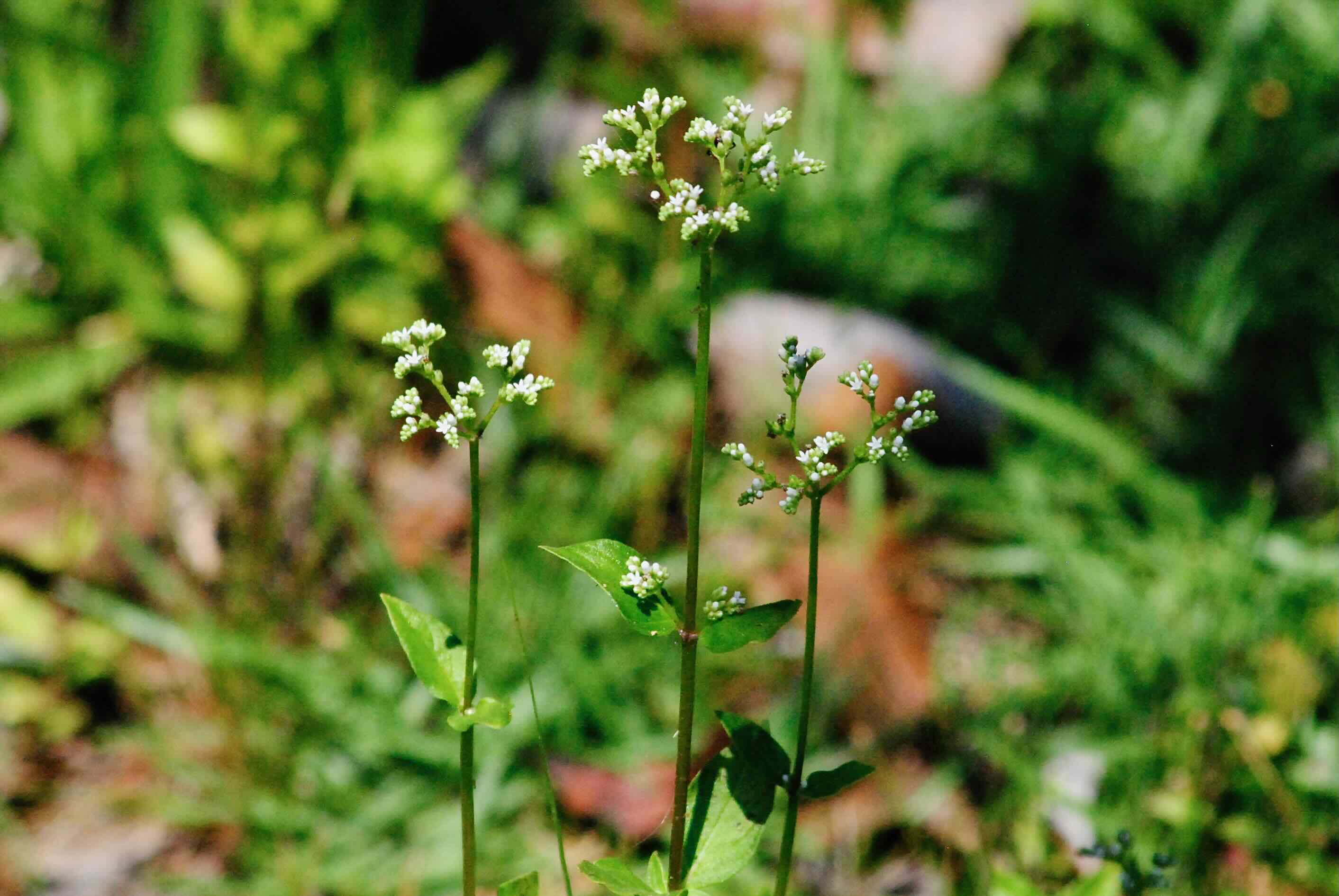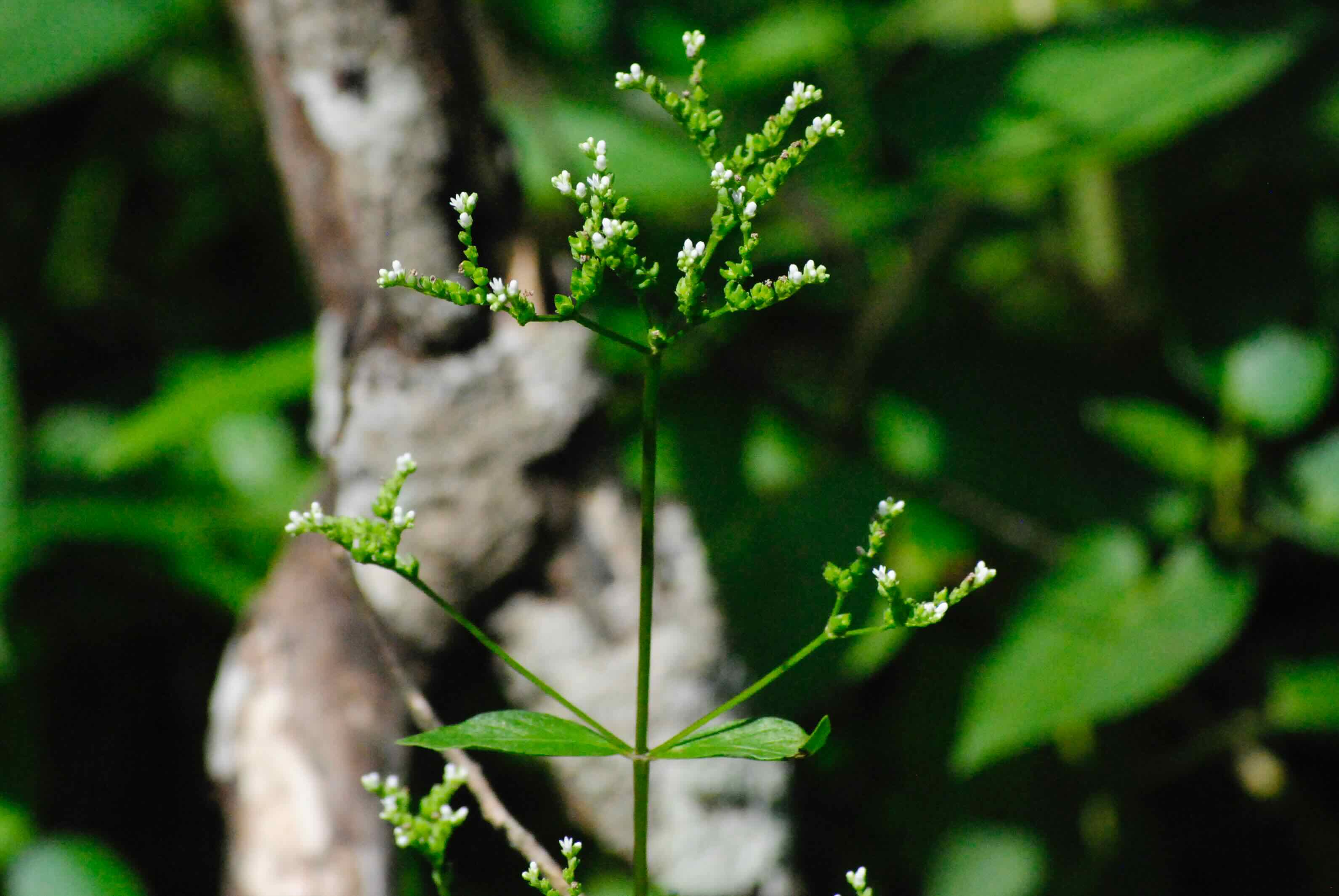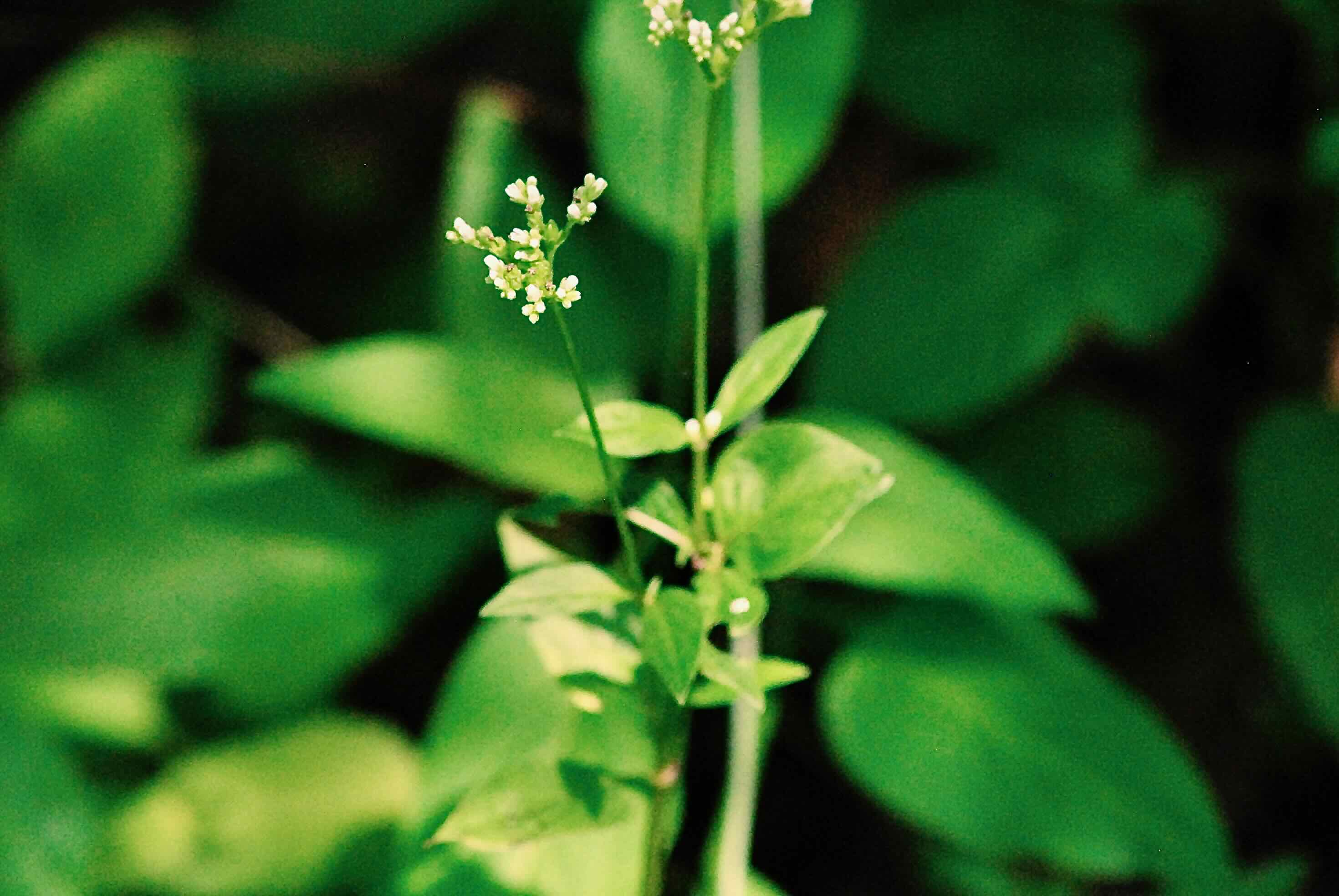
Mitrewort, photographed at Grassy Waters Preserve, West Palm Beach, Palm Beach County, in May 2014.
Miterwort, aka lax hornpod aka Mitreola petiolata, is plant that can be found on every continent sans Europe and Antarctica. Or maybe not. We will explain this little mystery shortly.
Miterwort is an older common name; most references use lax hornpod. Both names actually refer to the same feature, but we prefer miterwort, and for consistency sake, we’ll stick with it..
And despite some question regarding its cosmopolitan distribution, miterwort for sure it is a Florida native found in just about county in the Sunshine State. It’s also native to the Southeastern United States, found as far north Virginia and Missouri and as far west as Texas.
Beyond our borders, it’s native to Mexico, Central America and the Caribbean. Populations have been found in South America, Africa, Asia and Australia. But a team of scientists have put some doubt as to whether it’s all the same plant on every continent. We’ll cover the doubts in a bit.
Miterwort likes it on the warm and wet side. It’s found in warmer climates and in watery habitats, including swamps, marshes, roadsides, ditches, and wet fields.
Miterwort is an annual plant that grows as tall as three feet, though what we’ve seen is usually shorter.
Leaves grow opposite each along the stem. Each is entire, meaning the margins, or edges, are smooth, neither serrated or lobed. The petioles, or leaf stems, are short, the inspiration for the species name, petiolata. They vary in shape from elliptical to oval-like to lance-like.
Flowers are borne along a short spike called a cyme that appear at leaf axils — the joint where the leaves meet the stem — and at the top of the plant. The flowers themselves are tiny, about a tenth of an inch across, each with five white lobes. They are numerous, however.
A study of miterwort and a similar looking cousin done by Palm Beach State College professor and reknown South Florida naturalist George Rogers and Robert Wise of the University of Wisconsin found that despite visits from various insects, miterwort relies heavily on self-pollination rather than cross-pollination as a means of reproducing.
Genetic diversity within a species is limited with self pollination, but growing conditions where miterwort is found can change quickly from favorable to unfavorable, Rogers and Wise wrote. Better to reproduce quickly and without outside help than not at all.
At least some cross pollination occurs, evidenced by the multitude of miterwort variations found around the globe, the two wrote. There are something like 22 synonyms of miterwort, a pretty good indicator of how varied the plant can be. Synonyms occur when a naturalist comes across a plant and sees characteristics that differ from the standard and proposes a new species or a subspecies. The taxonomic powers that be review the work and either accept or reject it. If rejected, it becomes a synonym.
A more layman friendly description of Rogers and Wise’s work can be found here. Both of its common names, miterwort and lax hornpod stem from the shape of the seeds. Some see a resemblance to the miter, the pointed hat that bishops where. Others see horns.
As to the cosmopolitan distribution of the plant, Kurt Neubig, a professor of plant biology at Southern Illinois University, says DNA and morphological analysis indicate that the miterwort we see in Florida and other parts of North America might be a different species than what’s found in South America.
In fact, what’s called Mitreola petiolata actually could be three or more different species. Neubig hasn’t yet published any of his findings. “Data are still being collected, so more to come shortly …” he says on his website.
Regardless if it’s one, two or three different species, miterwort is a member of Loganaceae, the logania family.
Grassy Waters Preserve



